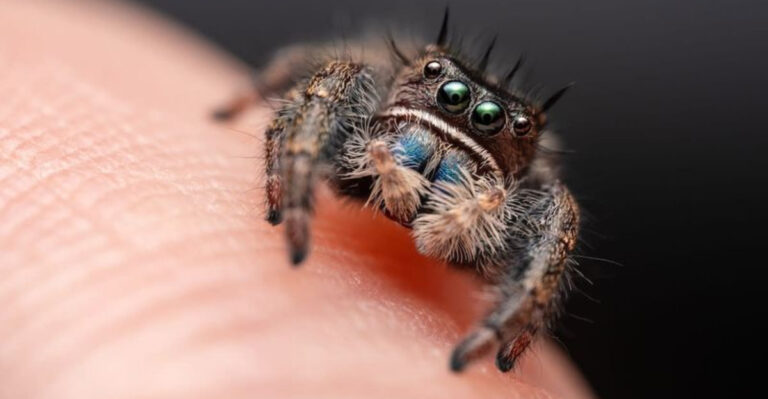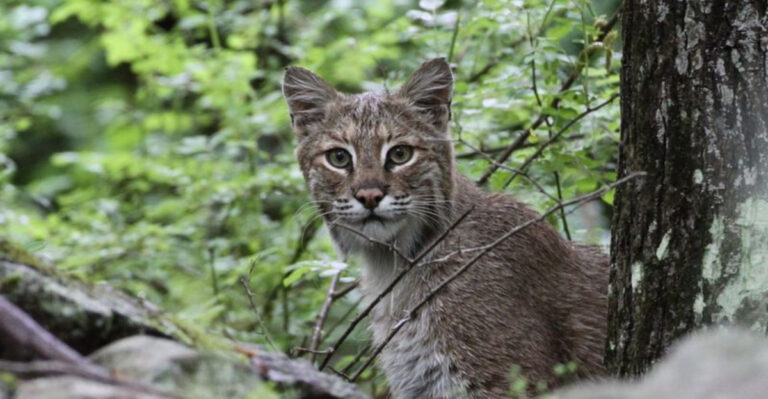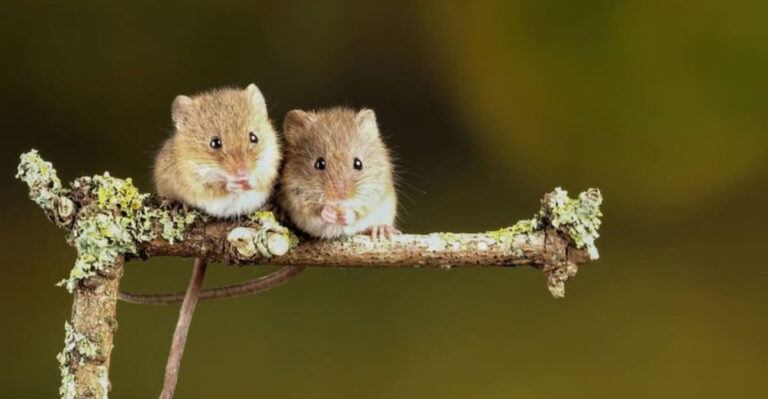13 Common Lion Myths People Believe That Are Totally False In The Wild

Lions have fascinated humans for centuries, earning the title ‘King of the Jungle’ and starring in countless movies and documentaries.
Yet despite our obsession with these magnificent big cats, many of us have some seriously wrong ideas about how lions actually live and behave in the wild.
From their family dynamics to hunting habits, these misunderstandings have shaped our perception of lions in ways that don’t match reality.
Let’s set the record straight on some of the most widespread lion myths.
1. Lions Don’t Actually Live In Jungles
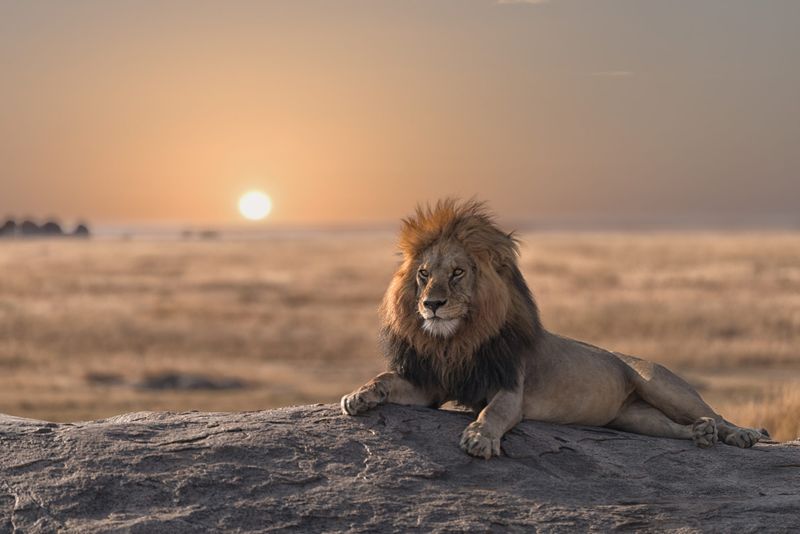
The famous nickname ‘King of the Jungle’ is completely misleading! Lions actually live in grasslands and savannas where they can spot prey easily.
They avoid dense forests and true jungles where their hunting style would be ineffective. Their preferred habitat features open spaces with scattered trees and brush that provides just enough cover for stalking.
African lions thrive in countries like Tanzania, Kenya, and South Africa on wide-open plains. The misconception likely originated with colonial-era Europeans who used ‘jungle’ to describe any wild place in
Africa, regardless of the actual ecosystem. Asian lions (a separate, endangered subspecies) live in dry deciduous forests – still not jungles!
2. Male Lions Aren’t Lazy Freeloaders
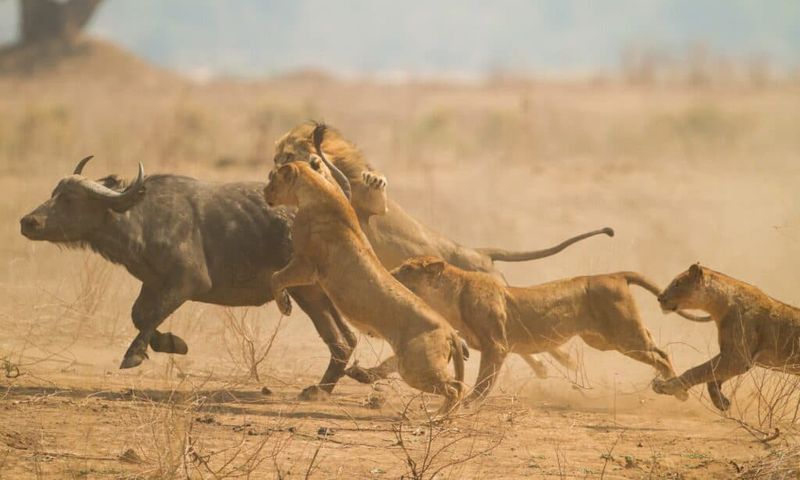
Popular wildlife shows often portray male lions as lazy layabouts who let females do all the hunting while they nap. Reality paints a different picture! Male lions actually serve crucial roles in the pride’s survival beyond occasional hunting.
They patrol and defend vast territories spanning up to 100 square miles. This constant vigilance protects the pride from rival males who would kill cubs if they took over.
Males excel at bringing down larger prey like buffalo and giraffes – dangerous animals that require immense strength.
Research shows males hunt frequently when solo or in bachelor groups. Their hunting style simply differs from females, focusing on power rather than coordinated stalking.
3. Female Lions Don’t Do All The Hunting

The widespread belief that lionesses handle 100% of hunting duties while males just eat the spoils doesn’t hold up to scientific scrutiny. Studies reveal a more complex reality of lion hunting dynamics that varies by region, pride composition, and prey type.
While females do indeed conduct most hunts, males regularly participate – especially when targeting larger animals like buffalo, where their size and strength prove invaluable.
In the Okavango Delta, researchers documented males hunting more frequently during floods when specialized skills were needed.
Solo males or those in bachelor groups must hunt for themselves constantly. The division of labor in lion society is far more fluid than commonly portrayed in documentaries!
4. Lions Don’t Roar To Scare Prey
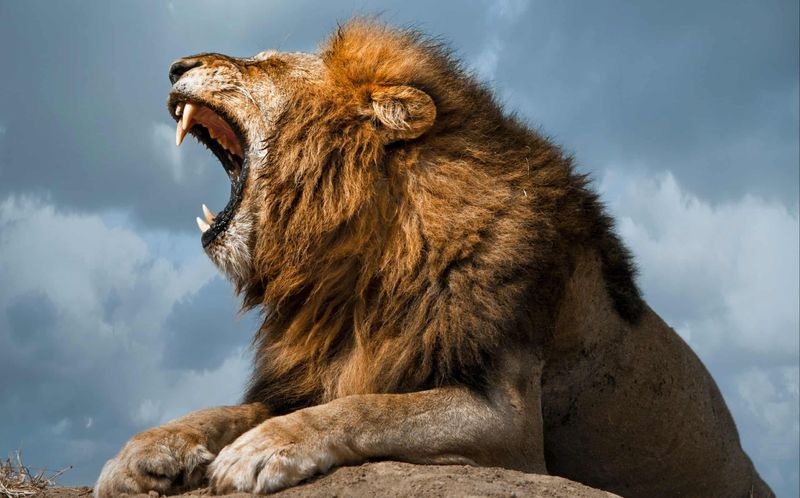
Many people believe lions roar to terrify prey before an attack – a dramatic idea reinforced by movies. Actual lion behavior contradicts this myth entirely!
Roaring while hunting would be counterproductive, alerting potential meals to the predator’s presence. Lions roar primarily for communication with other lions.
These powerful vocalizations can carry up to five miles across the savanna, helping pride members locate each other and warn rivals away from their territory.
During actual hunts, lions remain silent, using stealth to approach as close as possible before the final sprint.
The iconic roar serves social purposes – not hunting strategy. Lions are most vocal at night and dawn when sound travels farther, not during prime hunting hours.
5. Lion Manes Aren’t Just For Attracting Females
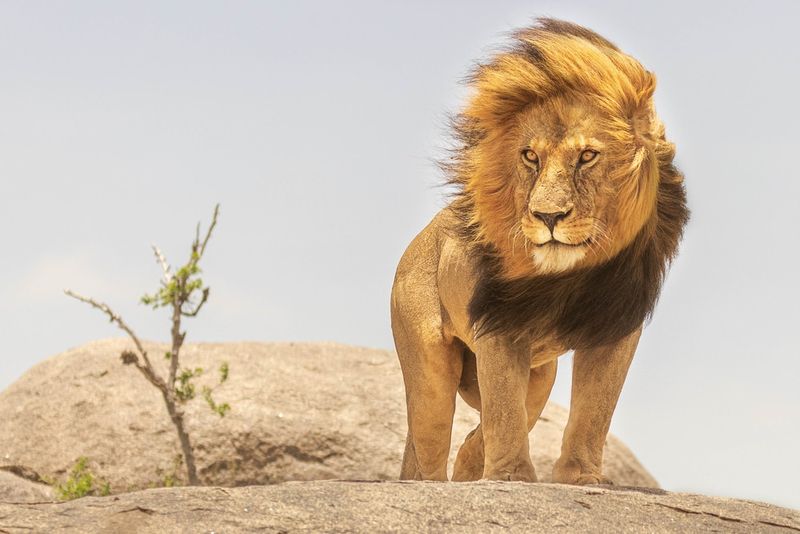
The magnificent mane isn’t simply a lion’s dating profile picture! While female lions do prefer males with darker, fuller manes, these impressive hair features serve multiple biological purposes beyond attraction.
Manes provide crucial neck protection during fights with rival males. These confrontations involve serious biting and clawing, and the thick hair creates a defensive barrier around vulnerable areas.
Scientists have discovered that mane size and color indicate a lion’s health, testosterone levels, and ability to heal from injuries.
Interestingly, lions in hotter climates often develop shorter manes regardless of genetics – a practical adaptation to prevent overheating.
Some lion populations, like those in Tsavo, Kenya, have evolved with minimal manes despite being healthy and successful.
6. Lions Aren’t Solitary Hunters Like Other Big Cats

Unlike their feline cousins – tigers, leopards, and jaguars who prefer the solo life – lions embrace social living. They’re the only truly social cat species, forming complex family groups called prides that work cooperatively to survive harsh environments.
A typical pride consists of related females, their cubs, and a coalition of 2-4 adult males. This social structure enables lions to defend larger territories and take down bigger prey than would be possible alone.
Females often hunt together using sophisticated coordination that increases success rates. The misconception stems partly from observing nomadic males between prides or comparing lions to other big cats.
Even when male lions leave their birth pride, they typically form small bachelor groups rather than living completely alone.
7. Lions Don’t Fear Hyenas – They Compete With Them
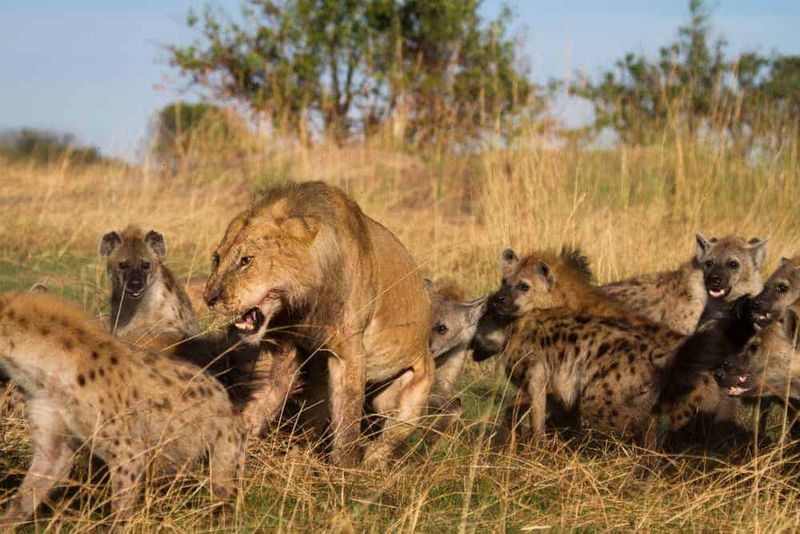
Disney’s Lion King portrays hyenas as lowly scavengers that lions despise but rarely as legitimate threats. In reality, the relationship between these species involves complex competition rather than simple dominance or fear.
Hyenas are skilled hunters in their own right, securing about 70% of their food through hunting – not scavenging. A clan of hyenas can actually drive lions away from kills when they outnumber them, and hyenas occasionally kill lion cubs when opportunities arise.
Similarly, lions steal hyena kills and target hyena cubs. The relationship is one of mutual competition for resources rather than one-sided bullying.
Both species have evolved specific behaviors to monitor and counter the other in an evolutionary arms race spanning millions of years.
8. Cubs Aren’t Trained to Hunt By Their Mothers
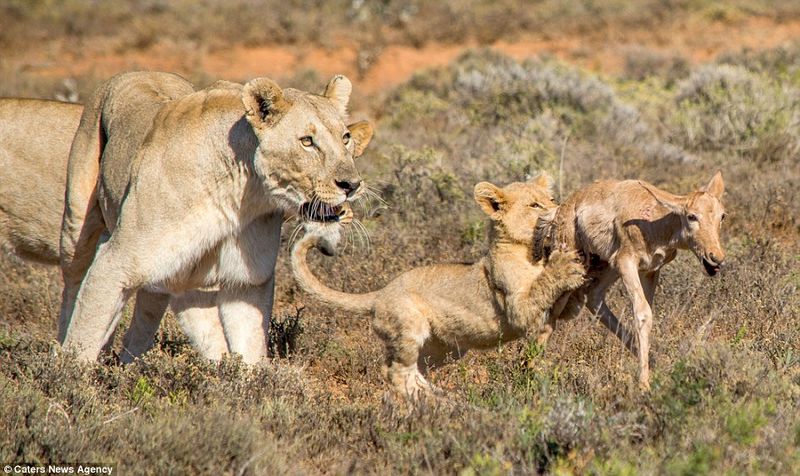
Many nature documentaries suggest lionesses formally train their cubs to hunt through structured lessons. The truth is far more instinctual and observational! Lion cubs don’t receive explicit hunting instruction from their mothers.
Young lions learn primarily by watching adults and through play with siblings that develops crucial muscles and coordination. Cubs begin following hunting parties around 3 months old, observing techniques from a safe distance.
They start participating in actual hunts around 11 months, learning through trial and error. By age two, young lions have developed the necessary skills through this combination of observation, play, and practice – not formal teaching sessions.
This learning process explains why orphaned lions raised in captivity struggle to hunt effectively when released, having missed this critical observational period.
9. Lions Don’t Have Kings Or Queens In Their Prides

The concept of a single dominant ‘king’ or ‘queen’ ruling over lion society misrepresents their actual social structure.
Lion prides operate more like cooperative family units than monarchies with designated rulers. Female lions form the stable core of the pride, typically consisting of related individuals who stay together for life.
These females share relatively equal status, with subtle dominance relationships that shift situationally rather than following rigid hierarchies.
Male coalitions who join prides may have their own internal pecking order, but don’t ‘rule’ over females who make many group decisions collectively.
The ‘king of beasts’ concept reflects human political structures projected onto animal behavior rather than lion reality. Cooperation, not absolute authority, defines lion society.
10. Lions Can’t Purr Like House Cats
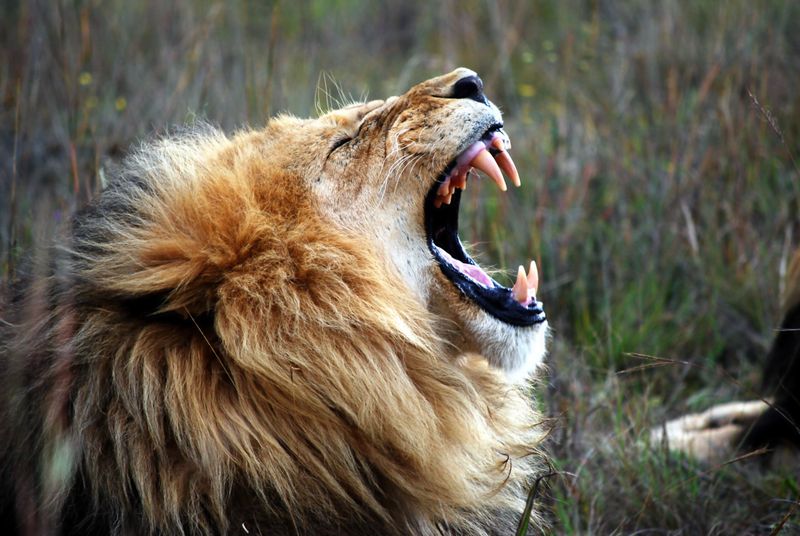
Many people assume all cats, including lions, can purr contentedly like our domestic feline friends. Anatomically, this simply isn’t possible for lions! The structures in their throats differ significantly from smaller cats.
Lions belong to the genus Panthera (along with tigers, jaguars, and leopards), which evolved a flexible hyoid bone that allows for roaring. This adaptation came at the expense of the ability to purr continuously.
While lions can produce a purr-like sound on exhale, they cannot sustain the continuous purr smaller cats manage during both inhaling and exhaling.
The distinction comes down to specialized anatomy – lions sacrificed purring for the ability to produce earth-shaking roars that can be heard up to five miles away. This evolutionary trade-off helped them communicate across vast territories.
11. Lions Don’t Climb Trees Regularly
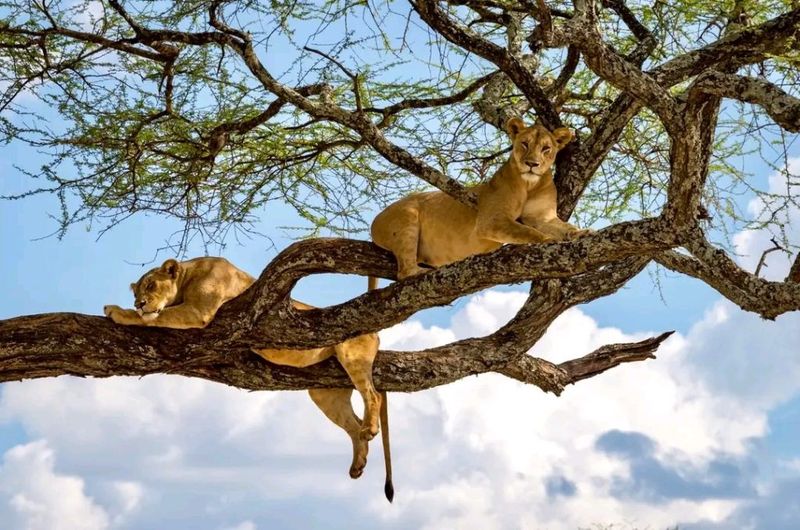
While viral photos of lions lounging in trees circulate widely online, these images typically come from specific populations that developed this unusual behavior.
Most lions across Africa rarely climb trees – they’re simply not built for it like their leopard cousins. Lions in Uganda’s Queen Elizabeth National Park and Tanzania’s Lake Manyara region do regularly climb trees, but this represents learned cultural behavior rather than typical lion habits.
These populations likely developed tree-climbing to escape biting flies or to catch cooling breezes. A lion’s heavy build (males can exceed 400 pounds) makes climbing difficult and potentially dangerous.
Their body structure evolved for running down prey on open plains, not navigating branches. When lions do climb, they’re notably less graceful than smaller, more agile cat species.
12. Cubs Aren’t Born With Spots That Disappear
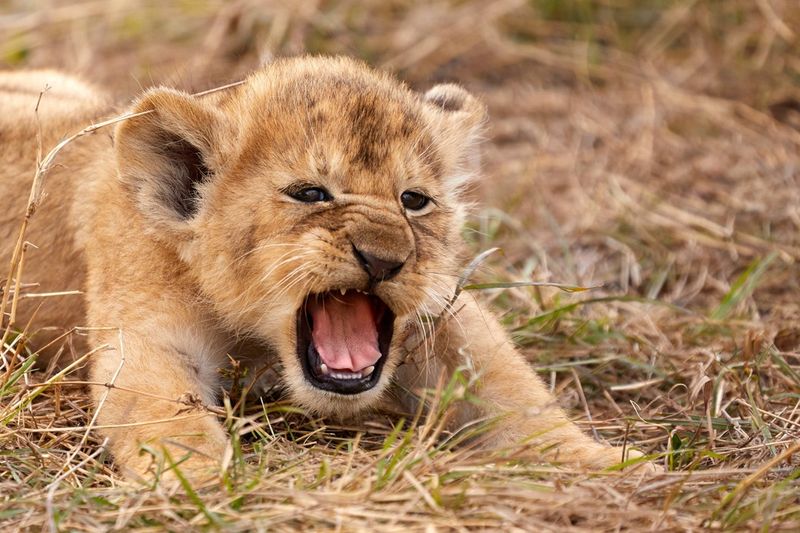
Many people believe lion cubs are born with leopard-like spots that fade as they mature. This widespread misconception confuses lion cubs with other spotted cat species!
Lion cubs are actually born with faint rosette markings – not true spots – that provide camouflage in dappled sunlight. These markings begin fading around 3 months of age as cubs become more mobile and spend more time with the pride rather than hiding.
By 6-9 months, most cubs have developed the solid tawny coat characteristic of adult lions. Some lions, particularly those in forested regions, retain faint markings into adulthood.
These ghost patterns become visible in certain lighting or when the fur is wet. The misconception likely stems from confusing lion cubs with cheetah or leopard cubs, which do have prominent spots.
13. Lions Don’t Need To Drink Water Daily

Unlike humans who need regular water intake, lions have adapted to harsh African conditions by developing remarkable water efficiency. They can go 4-5 days without drinking by extracting moisture directly from their prey.
A fresh kill provides significant hydration – blood and tissue fluids can satisfy most of a lion’s water requirements during scarce periods.
Lions have specialized kidneys that concentrate urine to conserve water, similar to desert-adapted species. When water is available, lions drink enthusiastically, often traveling miles to known water sources.
During extreme droughts, prides concentrate around remaining waterholes, creating temporary high densities.
This adaptation explains how lions survive in arid regions like the Kalahari, where surface water becomes extremely limited seasonally.

